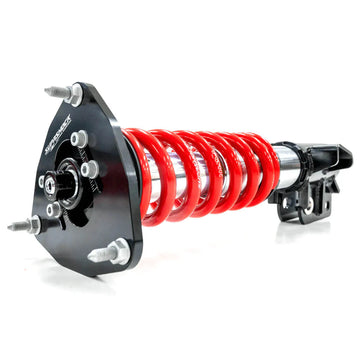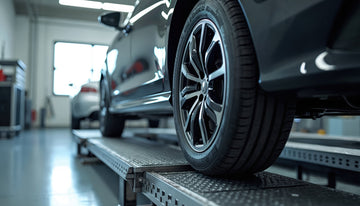Adjusting knobs used in car suspension refer to the controls or dials that enable drivers or mechanics to modify the settings and characteristics of a vehicle's suspension system. These knobs are typically located within the vehicle's cabin or engine compartment and allow for fine-tuning the suspension to match specific driving conditions, preferences, or performance requirements.
The suspension system of a car consists of various components, including springs, shock absorbers, struts, and anti-roll bars, which work together to provide stability, handling, and comfort while driving. The adjusting knobs serve as a means to alter the behaviour of these components, affecting how the car responds to bumps, corners, and other road irregularities.
What types of adjusting knobs are there?
The specific functions and features of adjusting knobs can vary depending on the type of suspension system installed in the vehicle. Common types include:
Damping adjustment knobs
These allow for modifying the damping force exerted by the shock absorbers or struts. By increasing or decreasing the damping, the driver can control how quickly the suspension compresses and rebounds. This adjustment influences the vehicle's ride comfort, handling response, and stability.
Spring preload/compression
Some suspension systems feature adjustable spring preload or compression knobs. These enable altering the tension or compression of the suspension springs, affecting the vehicle's ride height, stiffness, and weight transfer characteristics. Adjusting these knobs can help optimise the suspension for different loads or driving conditions.
Anti-roll bar adjustment knobs
Certain high-performance or sport-oriented suspensions include adjustable anti-roll bars. These knobs allow for modifying the stiffness of the anti-roll bars, which are designed to reduce body roll during cornering. Adjusting these enables fine-tuning the vehicle's handling balance and responsiveness.
How are adjusting knobs installed?
It is important to note that the installation process is complex and requires specific knowledge or expertise. If you are not familiar with suspension systems or do not have experience with automotive modifications, it is recommended to consult a professional mechanic or suspension specialist who can ensure the correct installation and adjustment for your specific vehicle.
However, a general overview of the installation process would be;
Identifying the adjusting knob location
Determine where the adjusting knobs are located in your particular vehicle. They are typically found in the cabin or engine compartment, within easy reach of the driver or accessible to a mechanic.
Accessing the suspension components
Gain access to the specific suspension components that the adjusting knobs will be connected to or control. This may involve removing panels, covers, or other parts to reach the desired area.
Mounting the adjusting knobs
Depending on the design of the adjusting knobs, they may need to be mounted on the suspension components themselves or connected through a linkage system. This often involves securely fastening it in place using bolts, screws, or other appropriate hardware. Follow the manufacturer's instructions or guidelines for proper installation.
Connecting the adjusting knobs
Once the adjusting knobs are mounted, they need to be connected to the corresponding suspension components. This could involve attaching linkage arms, control rods, or cables, depending on the specific setup. Ensure that the connections are secure and properly aligned to allow for smooth operation.
Testing and adjusting
Once the adjusting knobs are installed and connected, it is crucial to test the suspension system and make any necessary adjustments. This may involve driving the vehicle under different conditions, such as on different road surfaces or with varying loads, and adjusting the knobs accordingly to achieve the desired suspension settings.





